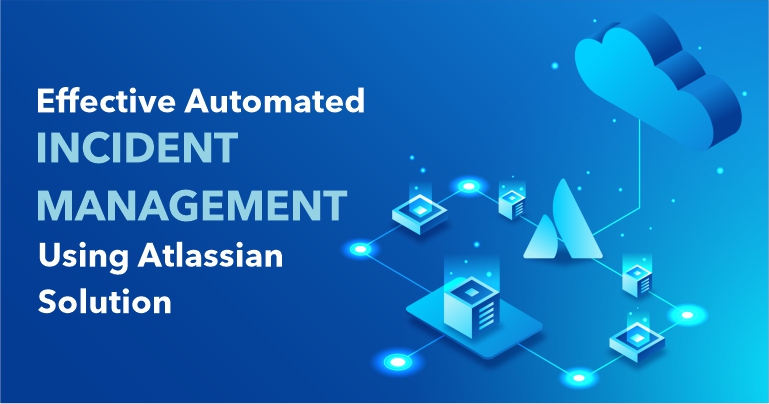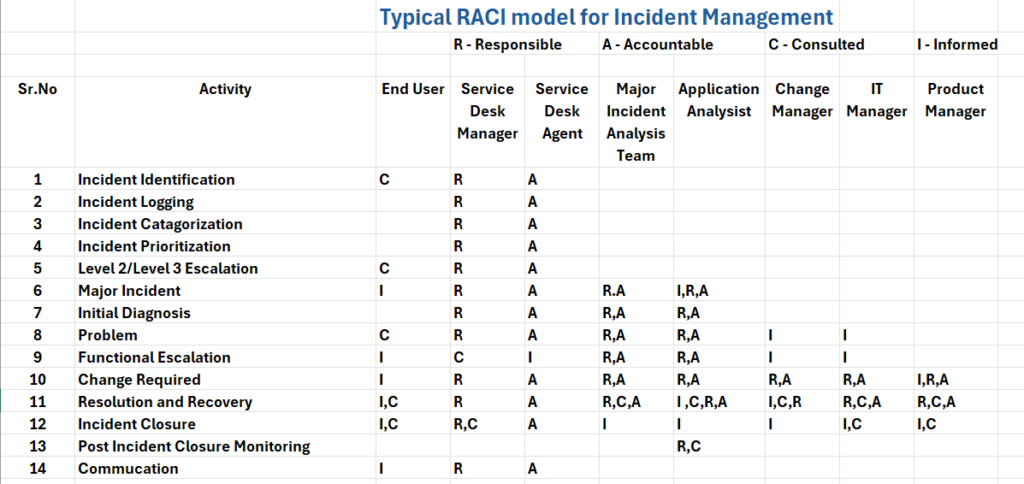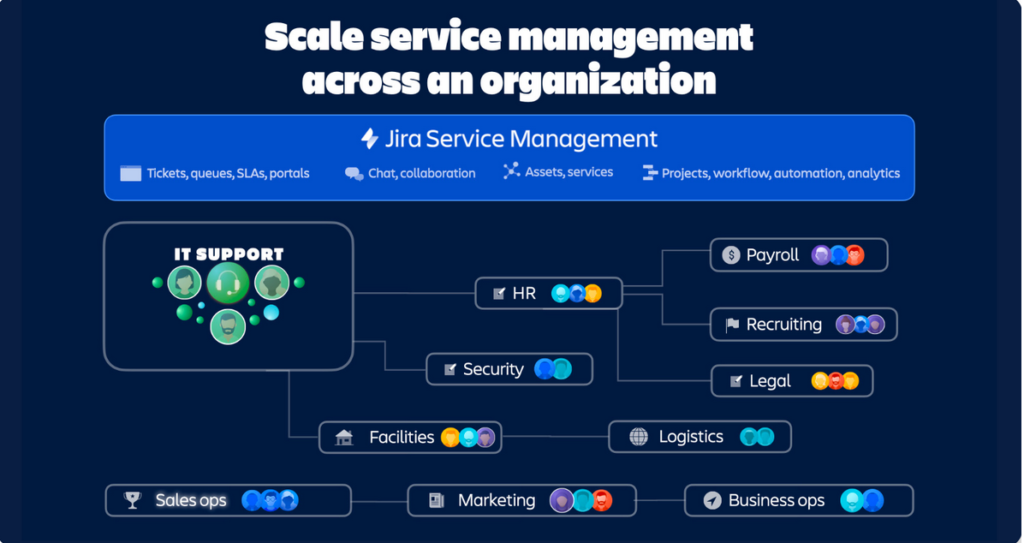Effective Automated Incident Management Using Atlassian Solution
Strengthen IT operations with automated detection, faster resolution, and smarter workflows using Atlassian tools. Connect with DevTools’ experts today!
14 +
Years of Experience
550 +
Happy Customers
250 +
Years of Tech Leadership Exp.

"License Reseller" and "Consulting & Implementation" Partner

TL;DR
- Effective incident management relies on structured processes, clear roles, and continuous improvement supported by monitoring, escalation, and communication practices.
- Jira Service Management enhances incident handling through workflows, automation, templates, integrations, dashboards, and a centralized knowledge base.
- Automated detection and logging using tools like Opsgenie, Nagios, and Zabbix reduce response times and ensure consistent, accurate incident creation.
- DevTools supports organizations by implementing ITSM best practices, integrations, SLAs, collaboration tools, and tailored incident management solutions.
Effective Incident management involves handling disruptions to IT services effectively to restore normal operations as quickly as possible and minimize the impact on business operations. Implementing effective automated incident management using Atlassian solutions like Jira Service Management can significantly enhance the efficiency and responsiveness of IT support operations.
Effective Incident Management in ITSM requires
1. Preparation and Planning
- Incident Management Policy: Establish a clear incident management policy that outlines roles, responsibilities, and procedures.
- Training and Awareness: Train staff on incident management processes and tools. Ensure everyone understands their role in incident management.
- Tool Selection: Choose and configure incident management tools (e.g., Jira Service Management) to support the processes.
2. Incident Detection and Logging
- Automated Monitoring: Use automated monitoring tools to detect incidents in real-time. These tools can generate alerts based on predefined thresholds.
- User Reporting: Provide multiple channels (e.g., phone, email, portal) for users to report incidents.
- Incident Logging: Ensure all incidents are logged in a centralized system with all relevant details (e.g., time of occurrence, description, reporter).
3. Incident Categorization and Prioritization
- Categorization: Classify incidents based on their type (e.g., hardware, software, network). This helps in assigning the right team for resolution.
- Prioritization: Use a prioritization matrix to assign a priority level (e.g., P1, P2, P3) based on the impact and urgency of the incident.
4. Incident Diagnosis and Escalation
- Initial Diagnosis: Conduct a preliminary analysis to understand the root cause of the incident.
- Escalation Procedures: Define clear escalation procedures for incidents that cannot be resolved at the initial support level. Ensure these procedures are followed to involve higher-level support or external vendors as needed.
5. Incident Resolution and Recovery
- Resolution: Implement a solution to resolve the incident. This may involve patching software, replacing hardware, or applying a workaround.
- Recovery: Ensure that services are restored to normal operation and that the solution is stable.
6. Incident Closure
- Verification: Confirm with the user that the incident has been resolved satisfactorily.
- Documentation: Document the resolution steps and any lessons learned. Update the knowledge base to help in resolving similar incidents in the future.
- Closure: Close the incident in the incident management system.
7. Communication
- Status Updates: Keep users and stakeholders informed about the status and progress of incidents. Regular updates help manage expectations and reduce frustration.
- Post-Incident Communication: Communicate the resolution and any follow-up actions to the affected users.
8. Continuous Improvement
- Post-Incident Review: Conduct a post-incident review to analyze what went well and what could be improved. Identify root causes and preventive measures.
- Metrics and Reporting: Track key metrics (e.g., mean time to resolution, number of incidents) to assess the effectiveness of your incident management process.
- Process Improvement: Continuously refine and improve your incident management processes based on feedback and performance data.
The below flow diagram indicate the Operational Overview of Incident Management which is generally practiced

Implementing Effective Incident Management in Jira Service Management
- Configure Jira Service Management: Set up incident management workflows, automation rules, and SLAs.
- Incident Templates: Create templates for different types of incidents to ensure consistent logging and handling.
- Integration with Monitoring Tools: Integrate Jira with monitoring tools to automatically log incidents and alerts.
- Dashboard and Reporting: Utilize Jira’s dashboard and reporting features to monitor incident metrics and performance.
- Knowledge Base: Develop a knowledge base within Jira to document common incidents and their resolutions, providing a resource for quicker resolution of future incidents.
Best Practices
- Regular Training: Conduct regular training sessions to keep staff updated on incident management processes and tools.
- User Feedback: Collect feedback from users about their experience with incident management to identify areas for improvement.
- Cross-Functional Collaboration: Encourage collaboration between different IT teams to resolve incidents more efficiently.
- Scenario Testing: Conduct regular scenario testing to ensure that the incident management process is robust and effective.
- Automate Incident Detection: Use monitoring tools to automatically detect incidents and reduce response times.
- Automation Rules: Implement automation rules for incident detection, categorization, and escalation.
- Implement a Clear Process: Define a clear, structured incident management process that everyone understands and follows with SLA.
- Use a Centralized System: Utilize a centralized incident management system like Atlassian Jira Service Management for logging, tracking, and managing incidents.
- Prioritize Incidents Effectively: Use a well-defined prioritization matrix to ensure critical incidents are addressed promptly.
- Regularly Review and Improve: Continuously review incident management processes and outcomes to identify areas for improvement.
- Reporting: Utilize Jira’s reporting capabilities to track incident metrics and performance.
- Communicate Clearly: Maintain clear communication with stakeholders throughout the incident lifecycle.
- Post-Incident Review: Conduct post-incident reviews to analyze the incident, the response, and how similar incidents can be prevented in the future.
Effective Automated Incident Management using Atlassian Solution calls for setting up Automation rules for Incident Detection and Logging using monitoring tools like Nagios, Zabbix, or Atlassian’s own Opsgenie. These tools can automatically create incidents in Jira Service Management when an issue is detected. Configuring Jira to create issues from incoming emails to ensure that incidents reported via email are automatically logged.
Effective and Automated Incident Management also require the stakeholders roles and responsibilities clearly defined and the below RACI metrics suggest a typical example .

Role of DevTools in Supporting ITSM and Incident Management Implementation
DevTools being a Platinum Solution and a Cloud Specialized Partner of Atlassian helps the customer to augment the ITSM or DevSecOps process in the organization and embrace the Incident Management Solution using Jira Service Management.
Typical Capability that DevTools Implements using Incident Management of Jira Service Management.
- Assess and Analyse the Requirement
- Understand and bring clarity on customers’ Procedural Incident (Predictable, documented) vs Non-Procedural Incident (undefined process or procedure for resolution on unexpected, uncommon, or complex, requiring unique or creative problem-solving approaches).
- Automation Feasibility
- Customer Portal, Self Service & Knowledge Management using Confluence
- Integration solutioning with other ITSM tools like ServiceNow, Fresdesk etc
- Atlassian Virtual Assistance
- Collaboration using Slack, Teams, Zoom
- Defining SLA & Monitoring SLA Breach, Report, Dashboarding
- Permission and Access
- Following and implementing ITSM best practices for Incident Management
- Integrating OpsGenie Atlassian Modern Incident Management Tool
- Implementing DevOps Scenario using other Atlassian or Non-Atlassian Solution, completing the cycle of development arising from Incidents of Jira Service Management
The use and proper implementation of Jira Service Management brings immense benefits of adopting ITSM process in the organization through different Incident Management process and cater the services to any department in the organization as shown below.

Conclusion
Using these technologies and software solutions customer can streamline the handling of both procedural and non-procedural incidents, improving the efficiency and effectiveness of organization incident management processes.

Pramodh Kumar M is a Solutions Architect at DevTools with over 6 years of specialized experience in DevSecOps and enterprise IT solutions. He holds multiple advanced certifications, including Certified Kubernetes Security Specialist (CKS), GitHub Advanced Security, and Azure Solutions Architect Expert. Pramodh specializes in Agile, Cloud & DevOps toolchain implementations, with extensive hands-on experience helping enterprises with digital transformation initiatives. His expertise extends to ServiceNow implementation and support. He is passionate about sharing practical insights on Cloud, DevOps, Automation, and modern IT operations.




